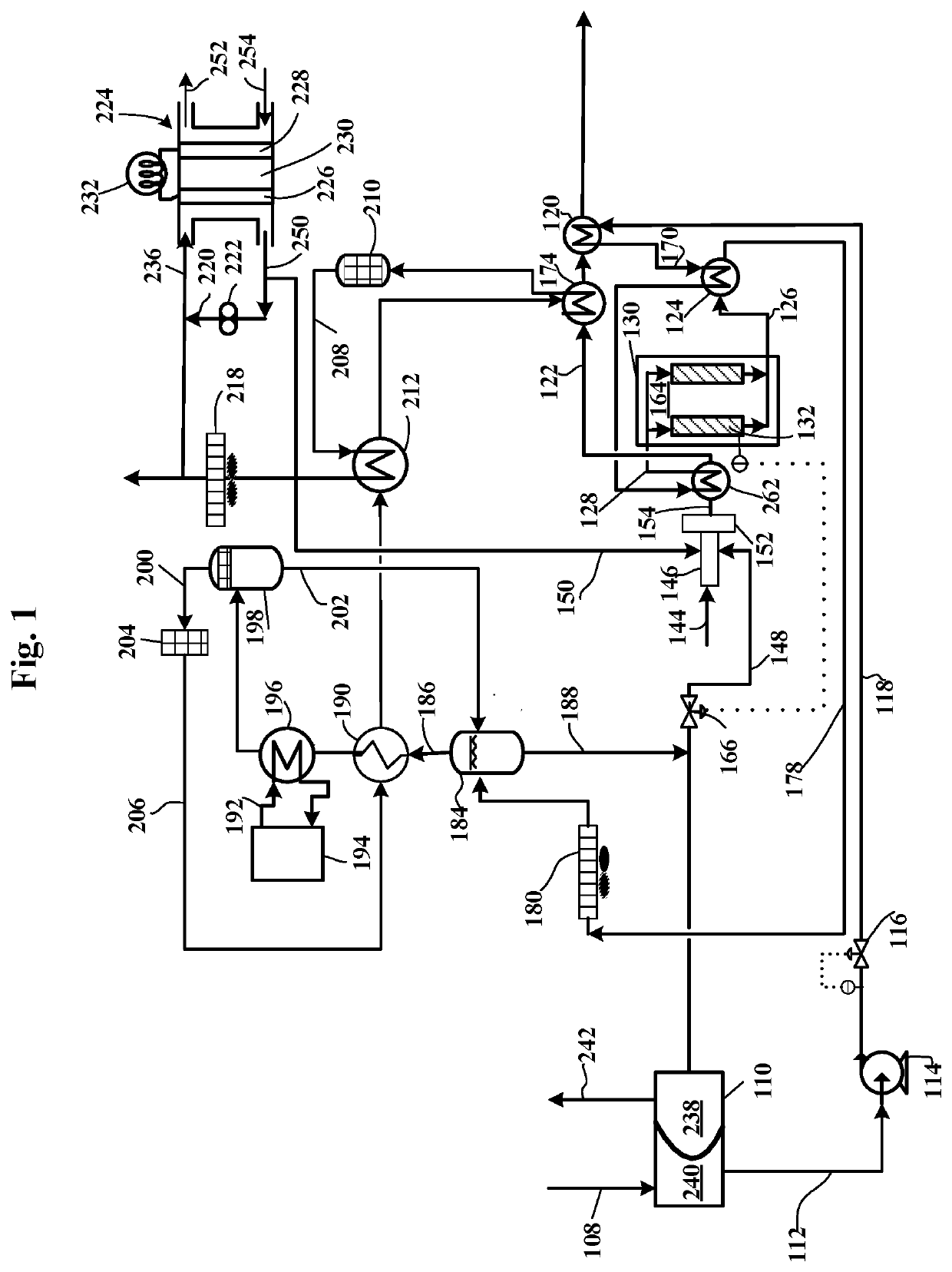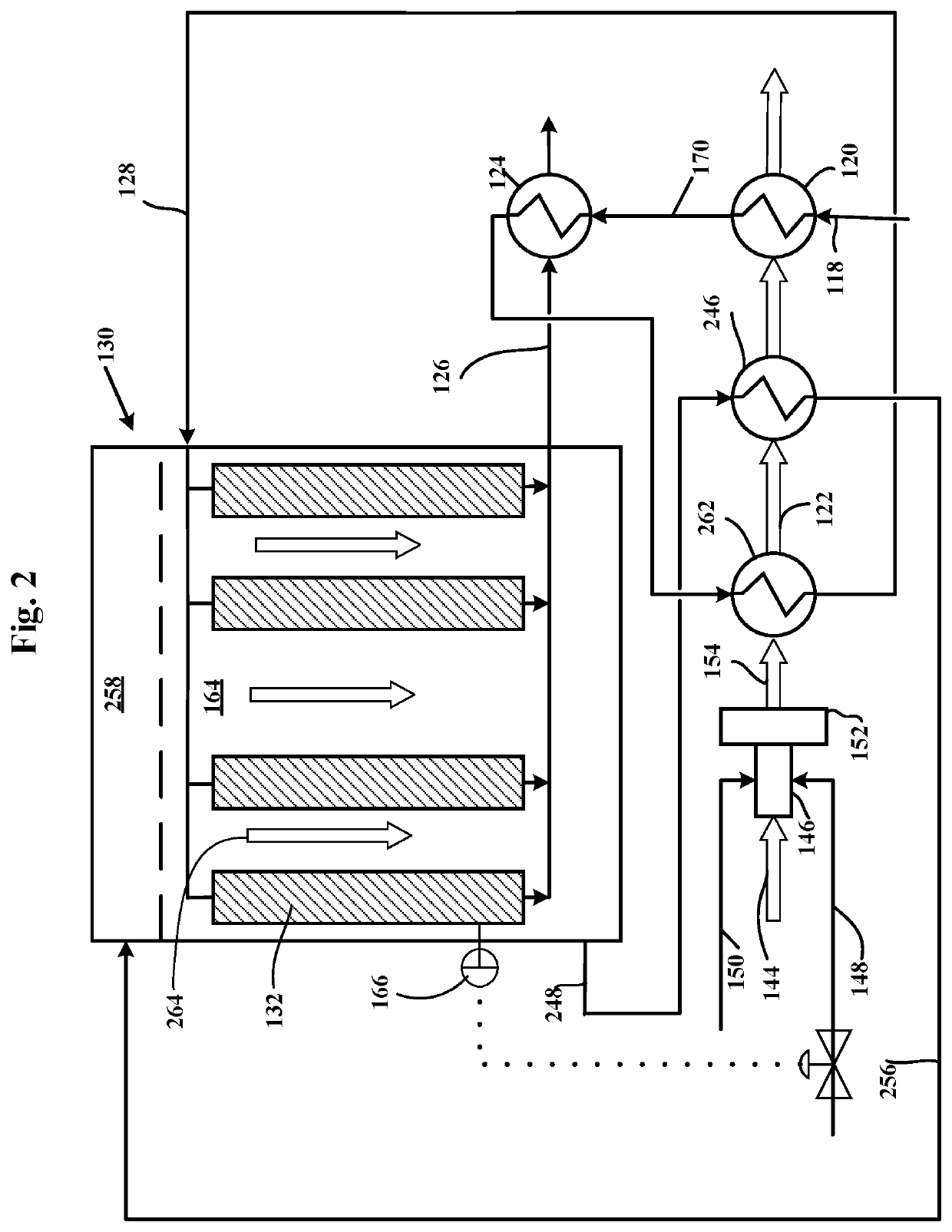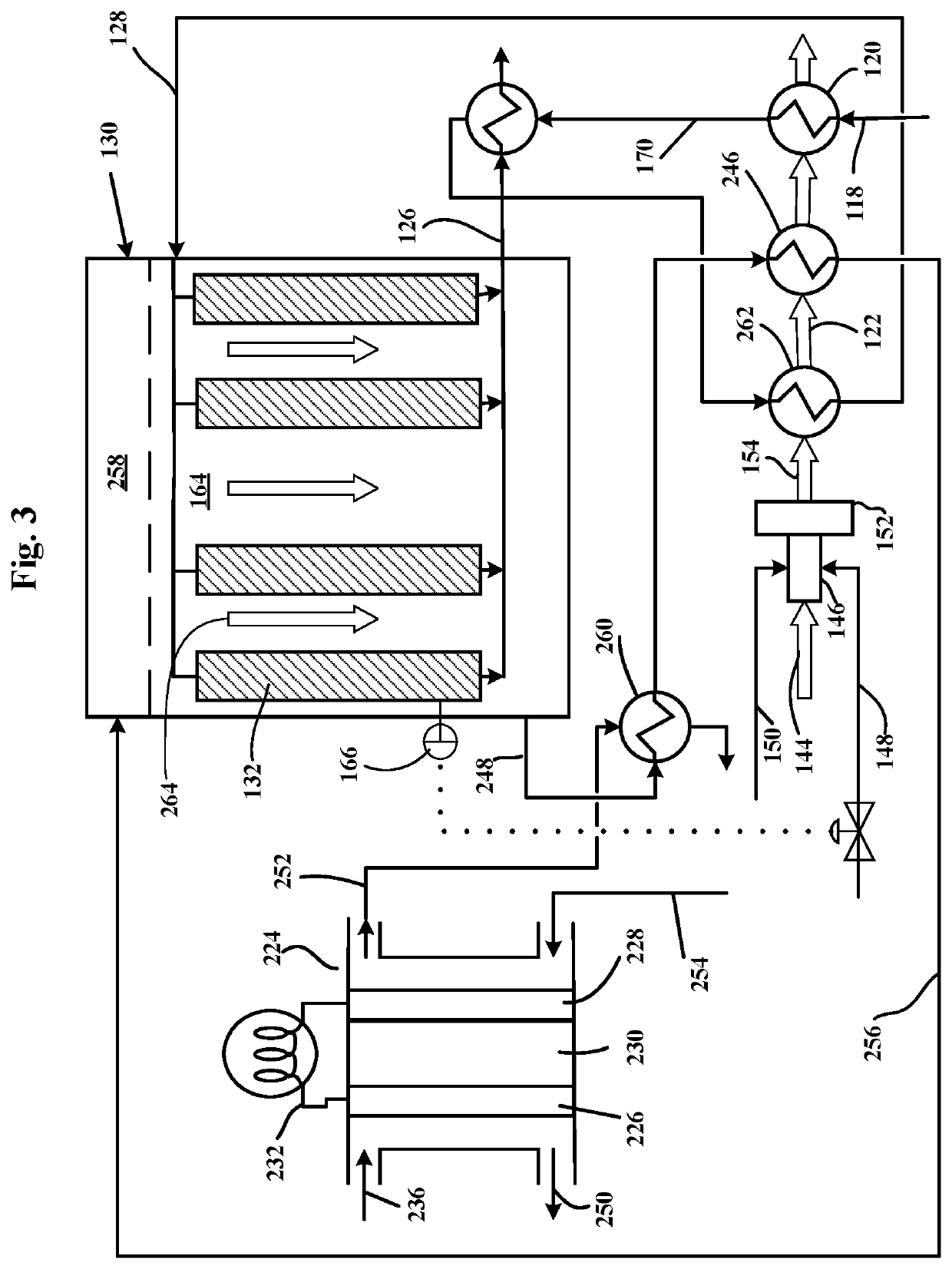Carbon-neutral process for generating electricity
a technology of carbon-neutral process and electricity, applied in the direction of electrogenerative process, electrochemical generator, electrolysis components, etc., can solve the problems of limited battery capacity, limited operation time, and limited battery weight in systems that depend exclusively on battery electrical storag
- Summary
- Abstract
- Description
- Claims
- Application Information
AI Technical Summary
Benefits of technology
Problems solved by technology
Method used
Image
Examples
Embodiment Construction
[0063]Reference will be made in detail to various embodiments, examples of which are illustrated in the accompanying drawings. In the following detailed description, numerous specific details are set forth to provide a thorough understanding of the present disclosure and the embodiments described herein.
[0064]However, embodiments described herein may be practiced without these specific details. In other instances, well-known methods, procedures, components, and mechanical apparatuses have not been described in detail so as not to unnecessarily obscure aspects of the embodiments.
[0065]Where permitted, all publications, patents and patent applications cited in this application are herein incorporated by reference in their entirety; to the extent such disclosure is not inconsistent with the modified fuels described herein.
[0066]Unless otherwise specified, the recitation of a genus of elements, materials, or other components, from which an individual component or mixture of components c...
PUM
| Property | Measurement | Unit |
|---|---|---|
| wt % | aaaaa | aaaaa |
| weight % | aaaaa | aaaaa |
| weight % | aaaaa | aaaaa |
Abstract
Description
Claims
Application Information
 Login to View More
Login to View More - R&D
- Intellectual Property
- Life Sciences
- Materials
- Tech Scout
- Unparalleled Data Quality
- Higher Quality Content
- 60% Fewer Hallucinations
Browse by: Latest US Patents, China's latest patents, Technical Efficacy Thesaurus, Application Domain, Technology Topic, Popular Technical Reports.
© 2025 PatSnap. All rights reserved.Legal|Privacy policy|Modern Slavery Act Transparency Statement|Sitemap|About US| Contact US: help@patsnap.com



